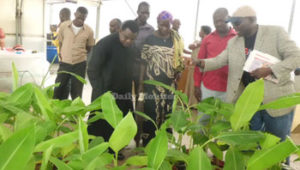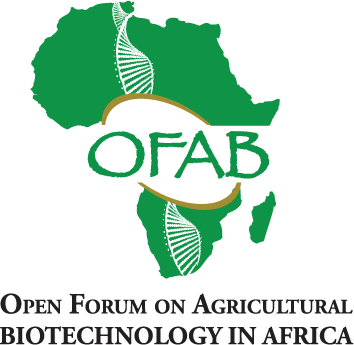 Left: A scientist explains biotechnology research to a group of visitors at Namulonge research institute. As the research progress, the best way to manage the products and related issues will have to be considered. PHOTO BY LOMINDA AFEDRARU
Left: A scientist explains biotechnology research to a group of visitors at Namulonge research institute. As the research progress, the best way to manage the products and related issues will have to be considered. PHOTO BY LOMINDA AFEDRARU
Biotechnology is one of the fast growing sectors in the world and the pace of this places unique demands on management of the technology. The managers must be able to create and sustain entrepreneurship, collaboration and research within a high-risk environment. So, they cannot adapt other corporate practices but develop their own that is compatible with the special nature of the biotechnology industry. Therefore, from research to commercialisation, there is need for each country to have specific institutional models.
Which model?: Against this backdrop, Uganda National Council of Science and Technology (UNCST) is engaging stakeholders on a model that applies to Uganda, which will enable products under research to be commercialised. At a recent meeting in Kampala of Open Forum on Agricultural Biotechnology in Africa (Ofab), Dr Julius Ecuru, the assistant executive secretary, UNCST, explained the different models used by various countries. These are, namely, committee-based, autonomous agency, distributed agency and techno-political models. Dr Ecuru noted that while choosing which model to adopt in Uganda, there are factors influencing choice of model to be considered.
Safety and impact: These include looking at the community’s perception about GM/biotech products, which are either under research or already commercialised in other countries. Others are familiarity of the communities with existing GM/biotech products, available capacity of different existing agencies and private sector involvement.
While choosing the model should be spelt out in the biotechnology Bill, the products to be considered include those for feed and food and the impact on the environment. It is the contention of UNCST that the model chosen aims at addressing biosafety issues and to ensuring that any risk is negligible. Potential benefits of GMOs should be maximised and mechanisms should be in place to protect environment and human health. The Cartagena Protocol on Biosafety, an international agreement that Uganda is party to, guides the regulation of transboundary movements of GM products. And accordingly, each party should take necessary and appropriate legal, administrative and other measures to implement its obligations under the Protocol.
Most appropriate: Since there is insufficient guidance on models for biosafety regulation at the country level, the protocol provides for each country to design and decide their own system though it is often difficult to arrive at a consensus. Therefore, there will be considerations of the merits and demerits of each model to arrive at what would be the most appropriate model for Uganda. Noteworthy is that the models evolve as there is more knowledge acquired on biotechnology. So, no particular model is perfect, but the one chosen should help the country realise its medium- and long-term development goals but be flexible enough to adapt to advancements in science.
The models on biosafety regulations: Committee-based model: It works on the principle of collective responsibility, it is inclusive and engages diverse stakeholders. It is the one used in Uganda although UNCST believes stakeholders can choose another that gives mandate to its members to exercise while handling biosafety issues. This is because the current one is restricted to scientists conducting research at research stations and trial sites meaning the finished products cannot be rolled out to farmers for commercialisation. It is used where there is limited regulatory capacity or few applications of biotech products and it is mainly used in early days of biosafety regulation. This has been applied by The Philippines in 1990. In Uganda, it was in 1996 while setting the biosafety committee at UNCST. There are two distinct elements – Advisory and technical – and appears flexible. The challenge is getting the right mix of members, motivating members and managing conflicts of interest.
Autonomous agency based model: This is where preference is for a stand-alone body, like the Kenya Governing Board, which makes the decisions, assisted by technical staff. It should be adequately staffed with one-stop point for biosafety issues. The challenge is that it has financial implications as well as boundary problems. Distributed agency based model: This is with a shared responsibility; specific agencies are established by law, such as National Drug Authority (NDA), Uganda National Bureau of Standards (UNBS) and the plant Inspectorate at Maaif. Each handles their area of operation.
It allows for incorporation of new advances in the field like gene editing which scientists are now applying. There is ease in financial adjustments but the challenge is bureaucracy, inefficiency plus uncoordinated approaches if agencies do not “talk to each other”. Techno-Politic model: This is where high ranking government official is involved like Minister or Permanent Secretary in decision making.
It has some similarity to the Autonomous agency based model but the challenge is that it can be frustrated by its own bureaucracy. This model has been used in Norway where it is the King to give directives of release of GM products. In Mauritius, it has also used this model where the minister responsible for agriculture gives directives for release of GM products.
